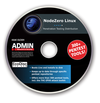
Lead Image © Tomasz Pacyna, 123RF.com
Forensic analysis with Autopsy and Sleuth Kit
Game of Clue
Analyzing computer systems after a total failure (e.g., after an attack with malware) is the task of forensic specialists. With the appropriate tools, they can reconstruct log data, web history, or image data and detect so-called indicators of compromise. In this article, I introduce you to the Autopsy Sleuth Kit tool and show you how to use it for forensic analyses.
After immediately provisioning alternative systems to secure business operations, one important task after a cyber incident in the enterprise is to process the incident and analyze the affected systems. In addition to countless commercial tools for the analysis and reconstruction of logs and data, you can also find very good, freely available, open source tools – such as the Sleuth Kit tool collection and its associated graphical user interface, Autopsy [1].
Images Only
Before you start analyzing the content of a hard drive, you first need to create a complete image of the disk. In principle, you can also work with Autopsy directly on the running system or only analyze individual folders, but to be on the safe side and not destroy important data by accidentally writing to the drive, first connect to another system and create a corresponding image (e.g., with dd on Linux).
Whether you continue working with the hard disk or the image afterward depends a bit on the circumstances. Autopsy itself makes no distinctions and supports not only classic dd images, but also those in the expert witness format (EWF), a proprietary format belonging to EnCase software [2] from the software vendor OpenText, or virtual machine VMDK and VHD images.
If you are on Windows, you can download the latest version with all dependencies directly from the Sleuth Kit website and install it from the wizard. On
...Buy this article as PDF
(incl. VAT)
Buy ADMIN Magazine
Subscribe to our ADMIN Newsletters
Subscribe to our Linux Newsletters
Find Linux and Open Source Jobs
Most Popular
Support Our Work
ADMIN content is made possible with support from readers like you. Please consider contributing when you've found an article to be beneficial.






